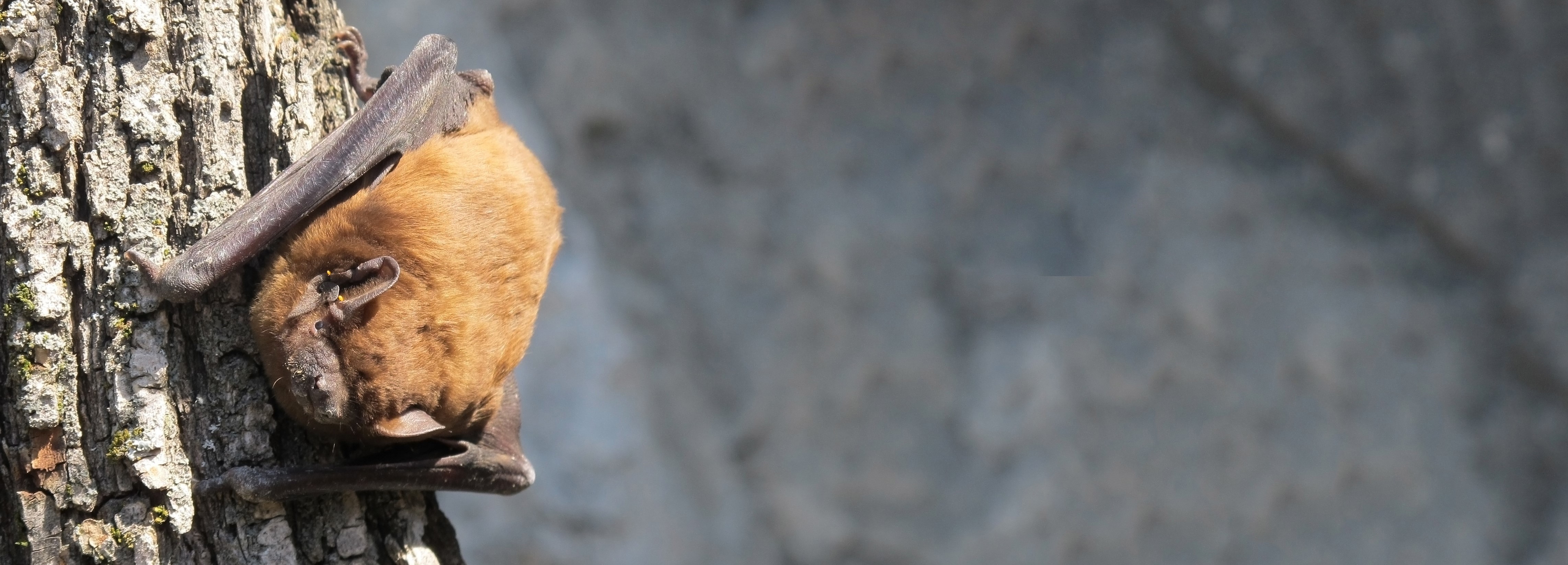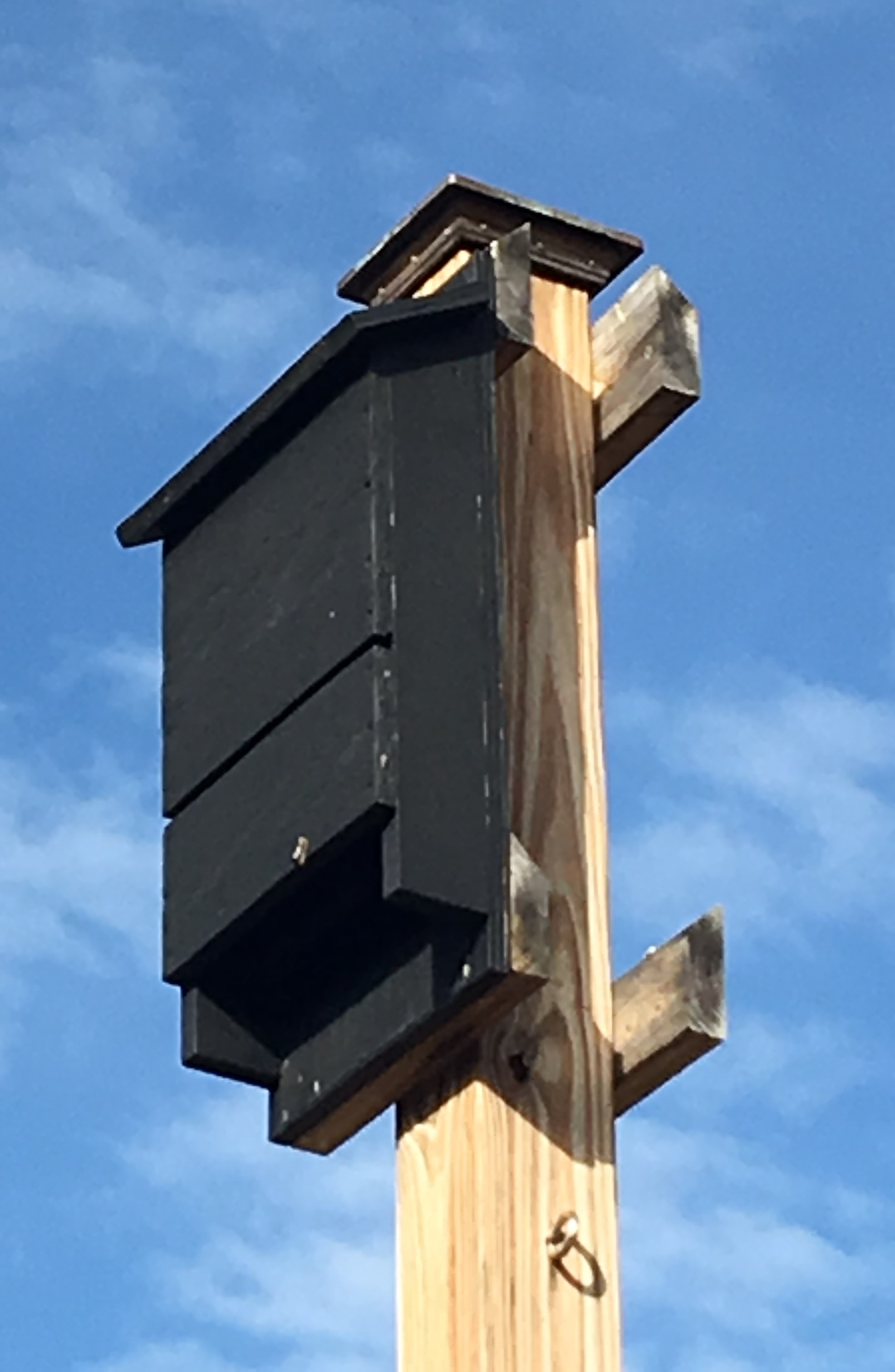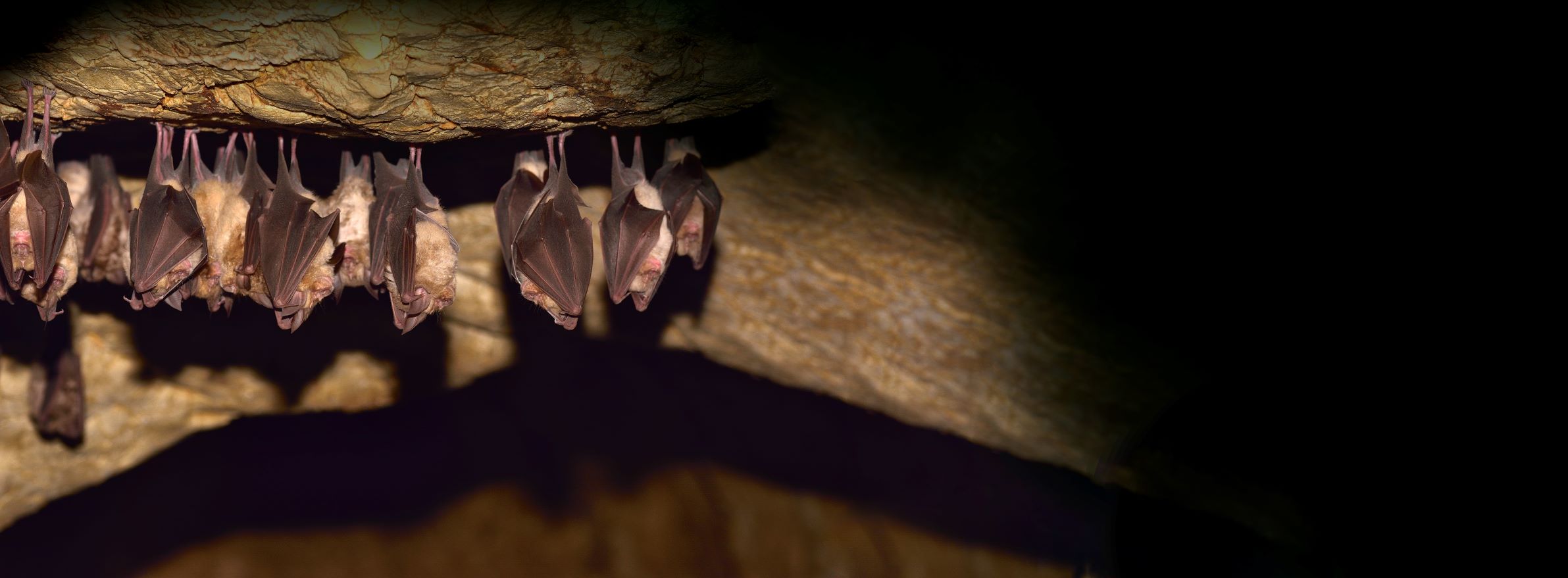Bat Abodes
One of the ways to help bats is through building and installing a bat box - a safe haven for bats to shelter, sleep, and raise their families.

Where do Bats Roost?
Bat colonies roost in caves, mines, crevices in rocks, trees, bridges, and sometimes even in buildings. Bats look for places that are high up, out of a predators’ reach; dark and quiet, and cozy, which allows the colony to stay close together and share body heat in cold weather. Access to water and an abundance of insects are also factors when choosing an ideal roost.
What is a Bat Box?
A bat box is a wooden temporary home for bats where they can safely shelter and sleep during the day and raise their families. Bat boxes are usually very simple in their design with small openings for bats to access, as well as a vent which allows air to flow through. Bat boxes are generally easy to make with the simplest design being a chambered bat box.
For a downloadable PDF step-by-step instruction sheet to build your own Bat Box, please click here.
Installation Tips:
 Height: Bat boxes should be mounted at least 3.5 metres (12 feet) above the ground, 4.5-6 metres (15-20 feet) is preferable and will increase the likelihood of bat use.
Height: Bat boxes should be mounted at least 3.5 metres (12 feet) above the ground, 4.5-6 metres (15-20 feet) is preferable and will increase the likelihood of bat use. - Mounting: Preferably mounted on poles or on a building and NOT on trees. Trees allow predators to easily wait for and catch bats as they come out for their evening.
- Sun: 6-10 hours of sun exposure per day should provide bats (especially the babies) with enough heat to keep warm.
- Spacing: The bat box should be at least 6-9 metres (20-30 feet) away from trees.
- Water: Bat boxes should be less than 0.4 kilometres (0.25 miles) away from a source of water.
Building and Buying Tips:
- The dimensions of the box should be at least 61cm×61cm (2ft ×2ft). If they are any smaller, bats won’t likely be interested in living there.
- Gaps between wood pieces in the box should be 1.9 cm (3/4 inch) wide. If these gaps are any wider, your bat box may turn into a wasp box.
- The exterior of your bat box is a dark colour such as a dark brown or black.
- Use only untreated wood, preferably oak or cedar.
For further reading about bats and bat box construction, please visit the following pages by clicking the links below:
Bat Box Designs by Community Bat Programs of BC
Bat Conservation International
Using Thermodynamics to Improve Bat Boxes in Cold Climates
Bats at Home
If bats can find places that are dark and provide a source of heat, then they are even more drawn to it. A crack or gap in a warm enclosed attic or basement becomes an attractive place for bats to roost.
While bats are very beneficial to people, they are not ideal in human living spaces. Bat guano (feces) can in some cases be a vector for disease transmission if disturbed or ingested. For this reason, it’s important that we keep bats outside of our homes.
You can make your home bat proof by checking the outside of your house for any cracks or gaps wider than 2 cm and repairing them. It is important to properly make repairs, as quick fixes like foam spray may not last, allowing the bats to enter once again.
If you find bats roosting in your attic or basement, it is best to talk to a reliable professional to remove them safely.
It is important to ask the right questions before hiring to ensure these endangered species are treated with respect, as opposed to using fear tactics and pesticides.
Some questions you may ask a professional could include:
- Will they be using one-way valves prevent bats from returning to the site?
- What methods will be used to properly exclude bats from the building?
- Will the time of year be considered? For example the removal of bats in the cold winter can be very harmful to them.
- After removal, how will they safely clean the space and remove bat bat guano from the space?
Whey are Bats in Danger?
To learn more about why bat populations are in danger, click the link below.


 Our Supporters:
Our Supporters:












